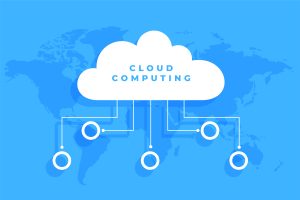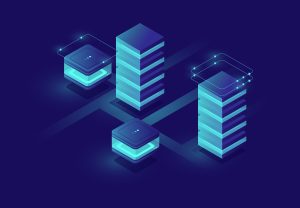Big data is an enormous amount of data coming from several different sources such as interacting with emails, websites, customer service, virtual assistants, supply chains, marketing, and more. Many organizations consider collecting this data to develop real value outcomes. Big data analytics convert this huge amount of data into meaningful insights. This helps businesses make crucial decisions and establish a strong position in the fast-growing market.
- According to a report by IDC, the global data sphere is expected to grow to 175 zettabytes by 2025, with a Compounded Annual Growth Rate (CAGR) of 61% from 2018 to 2025.
- A survey by NewVantage Partners found that in 2020, 67.9% of executives reported their organizations had accelerated their big data and AI initiatives.
Big data analytics is both a challenge and an opportunity. This blog explores the methods, tools, and benefits of Big Data Analytics for businesses.
What is Big Data Analytics?
Big Data Analytics is the process of using large databases or ‘big data’ to find hidden patterns and insights. Structured, semi-structured and unstructured data sources are analyzed using superior methods to retrieve crucial data. Specifically, it aids organizations in learning patterns and relationships between data to secure competitive advantages in the market.
The term “big data” became popular in the early 2000s as technology improved to handle large amounts of unstructured data. Innovations like Hadoop, Spark, and NoSQL databases were developed to store and process this data. The advancements in technology such as smartphones and IoT devices have led to an increase in the amount of data available for analysis.
Big data analytics uses statistical methods such as clustering and regression on datasets. It continues to evolve alongside technologies such as machine learning, allowing organizations to uncover complex insights from sources like sensors, networks, transactions, and web usage. This ongoing progress helps businesses succeed in the digital age by using strategies based on data analysis.
How does Big Data Analytics work?
Big Data Analytics can be described as a process through which raw data is collected, stored, and processed to discover relationships that would otherwise be hidden from human perception.
It involves the following steps:
- Data Collection: Big Data Analytics begins with collecting raw or unstructured data from various sources that include customer transactions, social media activities, various sensors, and others. This involves getting real-time data or batch data from various systems and devices.
- Data Storage: Once collected, the data needs to be stored efficiently. Organizations use databases, data warehouses, or data lakes, which can handle vast amounts of structured, semi-structured, and unstructured data. Data lakes, in particular, store data in its raw form, allowing flexibility in analysis later on.
- Data Processing: After storage, the data undergoes processing to clean, transform, and structure it for analysis. Technologies like Apache Hadoop and Apache Spark are commonly used for distributed processing of large datasets. Cloud-based platforms offer scalability and computational power, making them popular choices for data processing tasks.
- Data Analysis: Once processed, the data is ready for analysis. This involves applying statistical models, machine learning algorithms, and data mining techniques to discover meaningful patterns, correlations, and insights. The goal is to extract valuable information that can be used for decision-making, strategy formulation, and operational improvements.
- Insights Generation: After analyzing the data, organizations derive actionable insights by identifying patterns, trends, and correlations. These insights are crucial for making informed decisions and planning strategies that can drive business growth and efficiency.
- Visualization and Reporting: Presenting findings through visual charts, dashboards, and reports helps stakeholders easily grasp and act on insights. This clarity ensures that stakeholders can quickly use data to improve strategies and operations.
Essential Tools and Technologies for Big Data Analytics

Big data analytics relies on a variety of tools and technologies to process, analyze, and derive insights from large volumes of data.
Here are some tools and technologies commonly used in big data analytics:
- Hadoop: An open-source framework that lets you process big data across multiple computers by using simple programming methods.
- Apache Spark: It is a fast and powerful cluster computing system that excels in processing large datasets with in-memory capabilities, ideal for big data analytics.
- NoSQL Databases: These databases are designed to handle large volumes of unstructured, semi-structured, or structured data. Examples include MongoDB, Cassandra, and HBase.
- Apache Hive: A data warehouse infrastructure built on top of Hadoop for providing data summarization, query, and analysis.
- Python and R: These are popular languages for data analysis and statistical computing, offering extensive libraries and frameworks like pandas, NumPy, dplyr, and ggplot2.
- TensorFlow and PyTorch: These are frameworks for building and training machine learning models, especially deep learning, increasingly used in big data analytics.
- Tableau, Power BI, and Qlik: These are tools for data visualization and business intelligence, enabling the creation of interactive dashboards and reports from big data sources.
- Amazon Web Services (AWS), Google Cloud Platform (GCP), Microsoft Azure: Cloud platforms that provide scalable infrastructure and managed services for big data storage, processing, and analytics.
Benefits of Big Data Analytics
Big data analytics offers numerous benefits, significantly enhancing decision-making by providing data-driven insights that help organizations make more informed and accurate choices. It enhances customer experience by enabling personalized services and improving satisfaction.
Here are some benefits:
- Enhanced Decision-Making: Big Data Analytics enables data-driven decision-making by uncovering hidden trends and patterns.
- Improved Customer Insights: It helps to create detailed customer profiles and personalized marketing strategies by analyzing diverse customer data.
- Operational Efficiency: Identifies inefficiencies and optimizes processes to enhance productivity and reduce costs.
- Innovation and Product Development: Drives innovation by revealing market trends and unmet consumer needs for better product development.
- Risk Management: Detects fraud, predicts financial risks and ensures regulatory compliance by analyzing data patterns and anomalies.
Challenges of Big Data Analysis
Big Data analysis deals with handling and understanding huge amounts of data to find patterns and insights. Some common challenges include:
- Data Volume: Handling daily huge amounts of data challenges traditional tools due to their sheer volume.
- Data Variety: Big data spans structured, semi-structured, and unstructured formats from diverse sources like social media, sensors, and transactions.
- Data Velocity: High-speed data generation demands real-time processing for applications like fraud detection and personalized recommendations.
- Data Quality: Having accurate, complete, and reliable data is crucial despite problems like missing values and inconsistencies.
- Data Security and Privacy: Protecting sensitive information is challenging due to strict regulations, necessitating strong security measures during big data analysis.
Real World Applications of Big Data Analytics

Big Data Analytics is used in many industries to make better decisions and work more efficiently. In healthcare, it helps predict health issues and personalize treatments. Retailers use it to understand customers better and manage their stock. Finance uses it to catch fraud and assess risks, follow rules and keep things secure. Manufacturers use it to predict when machines need fixing and manage how things are made and delivered. Transportation uses it to find the best routes and manage vehicles, saving money and making things run smoother. Overall, Big Data Analytics turns lots of data into useful information, helping businesses do better worldwide.
Future and Trends in Big Data Analytics
In the future, Big Data Analytics will integrate AI for better predictions and automation. Edge computing will speed up real-time analysis by reducing delays. New privacy methods will ensure data security. Using multiple cloud services will make storing and processing data more flexible. Graph analytics will uncover complex relationships in data. Quantum computing holds the potential for solving even larger data challenges. As data continues to grow rapidly, these advancements will drive Big Data Analytics to extract valuable insights swiftly and securely.
Final Thoughts

In summary, Big Data Analytics is crucial for businesses to extract valuable insights from large datasets, improving decision-making and efficiency. With advancing technology and better data security, it holds promise for predicting trends and driving innovation across industries. This capability helps organizations understand customers, streamline operations, and maintain competitiveness in a dynamic market.






